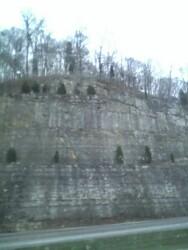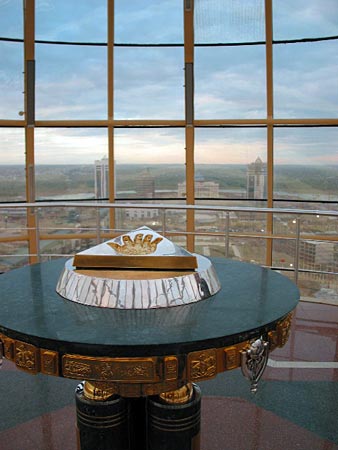The 12/9/05 NYT featured an
article by Lydia Polgren about the practice of burning off excess natural gas, known as flaring, in Nigeria. The article featured some stunning photos by Michael Kamber. The gas is released from underground deposits as a result of oil extraction, but because no one has invested in gas-harnessing infrastructure and there is no domestic (Nigerian) market for natural gas, it is simply burned off as waste. The facility at the focus of the article, in the town of Ebocha, is owned by the Italian oil company Agip.


images by Michael Kamber, from NYTimes, 12/9/05
The flares of Ebocha have been burning continuously since the 1970's, turning night into a surreal, luminous day. The flares are a serious environmental issue in Nigeria and also a visual representation of the relationship of the local population to the oil extraction industry: they live with its costs and reap little of its benefits. Two sites that advocate changes in the practice of flaring due to its effect on the people of the Niger Delta are
climatelaw.org and
remembersarowiwa.com.

image by Israel Aloja, from climatelaw.org


images from remebersarowiwa.com
The article captures a few nice details that give a sense of Ebocha as a place. The action centers on a bar/brothel called "One for the Road," where both lines of business cater to the workers from the oil plant, the only people around with a steady income. The proprietress sets out "white plastic chairs and tables," in anticipation of the evening rush. These are undoubtedly the molded plastic chairs that are seen on patios and sidewalks worldwide, cheap and universal, and, in this context, part of a poetic loop of petroleum income begetting petroleum-based amenities. Oil brings us all together for beer in the glow of the fire. Petroleum: for the good times (soon I'll dig up the Smithsonian article about the history of those very chairs).
Another interesting element is end-of-workday transition between unemployed locals and plant workers as occupants of the beer garden at One for the Road. There seems to be an understanding that those who cannot purchase anything may gather at the cafe, however briefly, until the paying customers arrive at the end of the plant shift. Polgren writes:
"Mr. Ekberi and a half dozen friends could not afford soft drinks, much less beer, so they sat uneasily at the table, making small talk.
Veronica, who declined to give her last name, cast suspicious glances their way, an unsubtle code to let them know they would have to clear out when paying customers from the Agip plant showed up...
the Agip workers started arriving. The jobless young men slipped away, off into the bright, bright night."
While still stratified and sad, this scene speaks of a level of cross-class social fabric that is utterly non-existent here. In America the conflict rages over the monopolization of cafe tables by wi-fi users. I suspect that in most cases the transgressors here can well afford the one-drink minimum but are so conditioned to self-absorption and entitlement that it just doesn't occur to them to come back after the lunch rush. (I did a lot of work at wi-fi hotspots this year. I generally avoided places where the conditions of use were emphatically regulated, but always made sure to purchase a drink at the outset, and, if my task kept me there into a mealtime rush, it simply meant that I had to buy lunch there or come back later. But I digress, this is not a manners blog....) The situation on this country, of course, is that the laptop serves as a class marker of sorts, and without it, non-payers would barely make it across the threshold of most establishments.
But the essential point of this post is as an example of several of my pet themes: infrastructure as an element of the landscape and the power of the industrial sublime. While it is essential to recognize and address the issues of environmental justice present here, it is also important to acknowledge the power of the spectacle. Obvious references are to the work of Richard Haag, Julie Bargman, and Peter Latz. Environmental justice demands that these facilites not spew their toxicity on populations who derive little benefit from them, but a sense of environmental poetic justice, or of economic transparency, would demand that these facilites somehow be visually integrated into the societies they serve. Why should societies whose lifestyle depends on oil be deriving their aesthetic templates from a pastoral economy. Let the derricks and flares dot the distant hillsides! The follies in the distance are likely poly-resin anyway.
 photo by some lo-cale loser
photo by some lo-cale loser video capture from wcpo.com
video capture from wcpo.com photo by Glenn Hartong, the Cincinnati Enquirer
photo by Glenn Hartong, the Cincinnati Enquirer photo by some lo-cale loser
photo by some lo-cale loser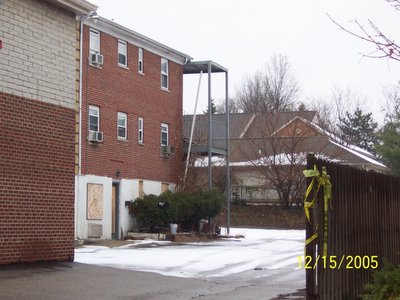
 photo by some lo-cale loser
photo by some lo-cale loser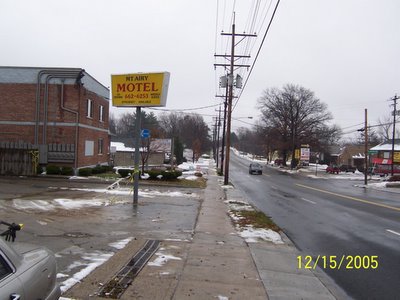 photo by some lo-cale loser
photo by some lo-cale loser 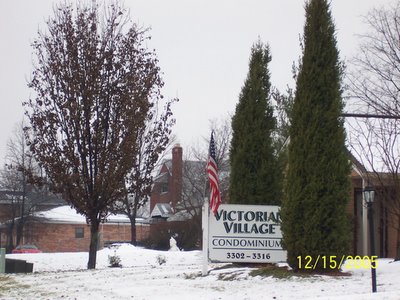 Nothing satisfies Victorian sensibilities quite like pyrus and thuja.
Nothing satisfies Victorian sensibilities quite like pyrus and thuja.